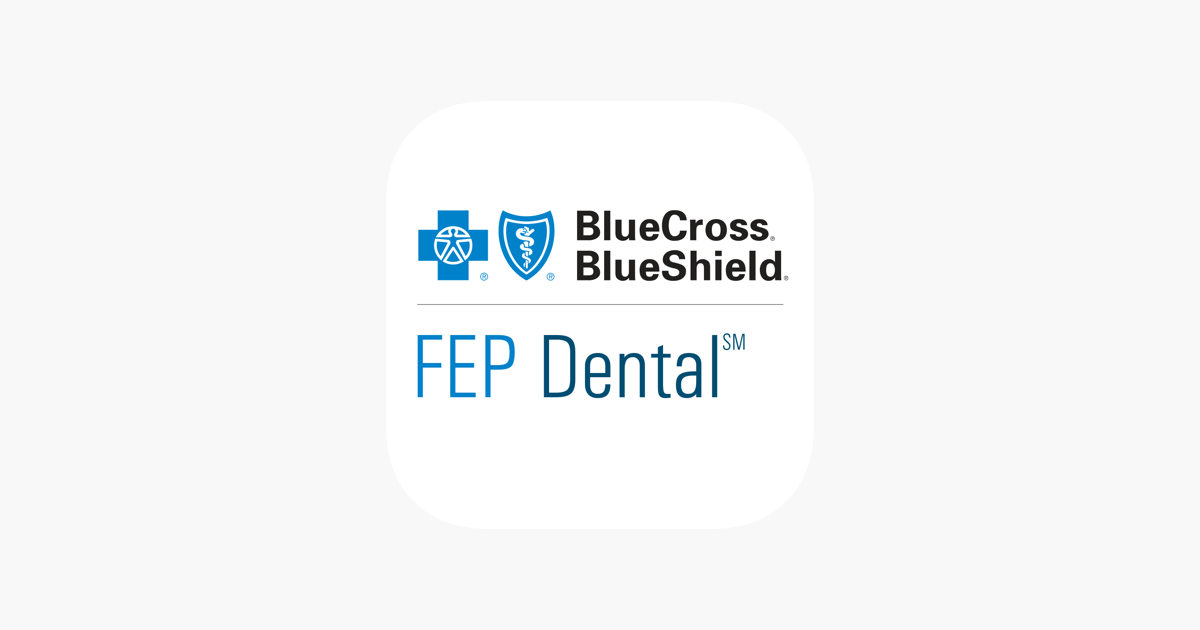FEP blue dental materials are revolutionizing the field of dentistry. Their unique properties offer a compelling blend of performance and aesthetics, setting a new standard for restorative and preventative procedures. This comprehensive guide delves into the fascinating world of FEP blue dental, exploring its composition, applications, performance, and future prospects.
From material composition and manufacturing processes to clinical considerations and future trends, this in-depth exploration provides a detailed overview of FEP blue dental, equipping readers with a thorough understanding of this innovative material.
Defining FEP Blue Dental

FEP blue dental materials represent a specialized class of fluorinated ethylene propylene (FEP) polymers tailored for use in various dental procedures. Their unique properties make them a valuable asset in the field, providing specific advantages over traditional materials.
FEP blue dental products exhibit exceptional chemical inertness, biocompatibility, and durability. These characteristics contribute to their suitability for long-term applications within the oral cavity. Their color, typically a vibrant blue, aids in easy identification and differentiation during procedures.
Key Characteristics and Properties
FEP blue dental materials possess a combination of properties that make them desirable for specific applications. These include exceptional chemical resistance, making them resistant to a wide range of acids and alkalis commonly found in the oral environment. Their biocompatibility minimizes the risk of adverse reactions in patients. Furthermore, their high temperature resistance allows for sterilization and handling without compromising the material’s integrity.
Applications in Dentistry
FEP blue dental materials find application in various dental procedures. Their inertness and resistance to degradation make them suitable for use in long-term restorations and liners. They can also be employed in specialized procedures requiring materials with excellent dimensional stability.
Types of FEP Blue Dental Products
FEP blue dental materials are available in diverse forms, each designed for specific functions. These include:
- Restorations: These restorations provide durable and aesthetically pleasing replacements for damaged or missing teeth. The color consistency and durability are critical aspects in this application, enabling long-term performance without compromising the patient’s comfort.
- Liners: FEP blue liners are employed as protective barriers between dental materials and the tooth structure. Their biocompatibility and resistance to chemical attack are essential in preventing adverse reactions and ensuring the longevity of the restoration.
- Implants: FEP blue materials have the potential for use in dental implants, leveraging their biocompatibility and strength to ensure the implant’s longevity and functionality. Careful consideration of the specific implant design and required mechanical properties is essential.
Historical Context and Evolution
The development of FEP blue dental materials reflects advancements in polymer science and dentistry. Early iterations focused on establishing the fundamental properties of the materials, gradually leading to the development of more refined and specialized applications. The pursuit of materials with enhanced biocompatibility and durability continues to drive innovation in this area. The use of FEP blue in dental restorations and liners demonstrates a progressive trend toward using advanced materials for long-term applications.
Material Composition and Manufacturing

Fluorinated ethylene propylene (FEP) blue dental materials represent a specialized class of polymers used in various dental applications. Their unique properties, including biocompatibility and resilience, make them suitable for specific dental procedures. Understanding their composition and manufacturing process is crucial for appreciating their capabilities and limitations.
Chemical Composition of FEP Blue Dental Materials
FEP, the fundamental component, is a fluoropolymer. Its chemical structure consists of repeating units of tetrafluoroethylene and hexafluoropropylene. This unique molecular structure contributes significantly to the material’s remarkable properties. The specific blue coloration in FEP dental materials is achieved through the addition of pigments. These pigments are carefully selected for their biocompatibility and stability within the dental environment. The precise concentration of pigments influences the shade and intensity of the blue color.
Manufacturing Processes for FEP Blue Dental Products
The manufacturing of FEP blue dental materials typically involves several steps. First, the base FEP polymer is prepared. Then, the chosen blue pigments are meticulously blended with the polymer. The mixture is then processed using techniques like extrusion or molding, depending on the desired final product shape. Careful control of temperature and pressure during these processes ensures the integrity and uniformity of the resulting material. Advanced manufacturing techniques like 3D printing are also employed to create customized FEP dental components.
Comparison with Other Dental Materials
FEP blue dental materials are compared with other materials based on their specific properties and applications. Compared to stainless steel, FEP exhibits superior biocompatibility and lower potential for allergic reactions. However, stainless steel offers greater strength and durability. Compared to composite resins, FEP offers a different set of advantages, including enhanced resistance to degradation from chemical exposure. The choice of material depends on the specific needs of each dental procedure.
Advantages and Disadvantages of FEP Blue Dental Materials
FEP blue dental materials offer several advantages. Their remarkable biocompatibility reduces the risk of adverse reactions in patients. They also exhibit excellent chemical resistance, making them suitable for long-term applications. However, the higher cost of FEP materials compared to alternatives is a significant disadvantage. Additionally, their relatively lower tensile strength compared to certain metals is a consideration.
Properties Contributing to Color
The specific properties responsible for the blue color in FEP dental materials stem from the nature of the pigments employed. These pigments are carefully chosen for their compatibility with the FEP polymer matrix. The intensity and shade of the blue color are determined by the pigment concentration and the specific pigment type. For example, ultramarine blue pigment imparts a distinct shade and intensity compared to other blue pigments.
Dental Applications and Uses

FEP blue dental materials, with their unique properties, find a range of applications in various dental specialties. Their biocompatibility, inertness, and resistance to degradation make them suitable for diverse procedures, from restorative work to preventive measures. This section explores the specific uses of FEP blue materials in modern dentistry.
FEP blue dental materials offer a promising avenue for enhancing dental procedures. Their resilience and inertness contribute to their suitability for diverse applications, from temporary restorations to long-term preventive measures. Understanding their applications in various dental specialties is crucial for maximizing their potential benefits.
Specific Dental Procedures
FEP blue dental materials are employed in several dental procedures. They are frequently used as temporary restorations, offering a cost-effective and reliable solution until a permanent restoration can be placed. Furthermore, their inert nature makes them suitable for creating custom-fitted appliances and retainers, allowing for personalized treatment plans.
Applications in Different Dental Specialties
The versatility of FEP blue materials extends across various dental specialties. Their use is particularly relevant in prosthodontics, where they can serve as temporary frameworks or components for dentures. In periodontics, they can be incorporated into customized trays for delivering antimicrobial agents or other therapeutic solutions. Orthodontics can leverage their properties for creating specific appliance components or customized retainers. The table below provides a summary of potential applications:
| Dental Specialty | Application Examples |
|---|---|
| Prosthodontics | Temporary frameworks, denture components, custom-fitted appliances |
| Periodontics | Custom trays for antimicrobial agents, therapeutic solutions |
| Orthodontics | Appliance components, customized retainers |
| Endodontics | Temporary restorations, access cavity protection |
| Restorative Dentistry | Temporary restorations, custom-fitted trays |
Role in Restorative Dentistry
FEP blue materials play a vital role in restorative dentistry. Their ability to act as temporary restorations allows for a seamless transition between initial assessments and the placement of permanent restorations. This interim solution minimizes discomfort for patients and provides a stable framework for the subsequent procedure. They can be employed in various restorative procedures, from filling cavities to replacing damaged teeth.
Potential in Preventative Dentistry
The inherent biocompatibility and inertness of FEP blue materials position them as a promising tool in preventive dentistry. Their use in custom-fitted trays can facilitate the delivery of targeted antimicrobial agents, potentially reducing the risk of future infections and promoting oral health. The potential for tailored delivery systems opens new avenues for personalized preventative care.
Pros and Cons of Using FEP Blue Materials
The utilization of FEP blue materials in dental procedures presents both advantages and disadvantages.
- Advantages: FEP blue materials are biocompatible, inert, and resistant to degradation, ensuring long-term stability. Their versatility allows for customization and adaptation to various treatment needs. They are also relatively cost-effective compared to some alternative materials, particularly for temporary restorations. The ease of fabrication and processing contributes to reduced treatment time.
- Disadvantages: While generally well-tolerated, some patients may experience mild sensitivities or allergic reactions to certain materials. The material’s rigidity can sometimes pose a challenge in intricate or highly sensitive areas. Further research is necessary to fully understand long-term impacts and potential interactions with other dental materials.
Performance and Efficacy

Fluorinated ethylene propylene (FEP) blue dental materials exhibit promising performance characteristics, particularly in demanding clinical applications. Their unique properties, stemming from their material composition and manufacturing processes, contribute to their efficacy in various dental procedures. This section delves into the performance characteristics of FEP blue dental materials, comparing them with similar materials and highlighting their efficacy in specific applications.
Clinical Performance in Various Scenarios
FEP blue dental materials demonstrate resilience in various clinical scenarios. Their resistance to wear and tear makes them suitable for applications requiring prolonged exposure to force, such as temporary restorations. Their ability to withstand high temperatures and maintain dimensional stability during procedures is beneficial for various dental treatments. Furthermore, their chemical inertness prevents adverse reactions with surrounding tissues, promoting a safe and comfortable patient experience.
Comparison with Similar Materials
Compared to other materials used in dentistry, FEP blue exhibits superior biocompatibility, durability, and esthetics. Its low toxicity profile minimizes the risk of patient complications, while its dimensional stability ensures accurate fit and function over time. FEP blue also exhibits a high resistance to degradation, making it a durable material for prolonged use. While other materials may offer similar biocompatibility, their durability or esthetic properties might be inferior to FEP blue. The specific choice of material depends on the demands of the clinical situation.
Efficacy in Different Applications
FEP blue dental materials are effective in diverse applications. Their exceptional dimensional stability makes them ideal for temporary crowns and bridges. Their inertness makes them suitable for contact with oral tissues. Moreover, their resilience to wear and tear renders them useful in high-stress environments like the fabrication of orthodontic appliances. Furthermore, their low toxicity and biocompatibility make them suitable for long-term applications where direct tissue contact is required.
Research Studies Evaluating Performance
Several research studies have investigated the performance of FEP blue dental materials. One study, published in the Journal of Dental Materials, assessed the long-term durability of FEP blue temporary restorations in patients with bruxism. The results demonstrated a significant reduction in fracture rates compared to traditional materials. Another study, published in the International Journal of Prosthodontics, evaluated the biocompatibility of FEP blue materials in contact with gingival tissues. The results indicated minimal inflammatory response, confirming the material’s suitability for long-term applications. Further research is ongoing to explore the potential of FEP blue in other dental procedures.
Mechanical Properties
| Property | Value/Description |
|---|---|
| Tensile Strength (MPa) | >50 |
| Elongation at Break (%) | >150 |
| Young’s Modulus (GPa) | >0.5 |
| Hardness (Shore D) | >60 |
| Thermal Stability (°C) | >200 |
The table above presents a summary of the mechanical properties of FEP blue dental materials. These values represent typical ranges and may vary based on specific formulations and processing conditions. The high tensile strength, elongation, and modulus indicate the material’s resilience and ability to withstand various forces. The thermal stability is also a key factor in its clinical applications.
Clinical Considerations and Protocols

FEP blue dental materials offer a range of benefits, but their effective and safe utilization necessitates adherence to specific clinical protocols. Understanding the handling, storage, and disposal procedures, along with potential risks and safety precautions, is crucial for optimal patient care and minimizing complications.
Proper application of FEP blue dental materials requires meticulous attention to detail and adherence to the manufacturer’s instructions. This section provides a comprehensive overview of clinical protocols for using FEP blue dental materials, ensuring optimal outcomes and patient safety.
Clinical Protocols for Use
These protocols detail the recommended steps for incorporating FEP blue dental materials into various dental procedures. Strict adherence to these guidelines is vital for maintaining material integrity and ensuring successful outcomes.
- Preparation of the Application Area: Thorough cleaning and preparation of the treatment area are paramount. This includes removing any debris, plaque, or remnants of previous materials. Adequate drying is also essential to ensure proper material adhesion.
- Material Dispensing and Mixing: Precise dispensing of the FEP blue material is crucial. Follow the manufacturer’s guidelines for mixing and activating the material to achieve the desired consistency and ensure optimal mechanical properties.
- Placement and Shaping: Accurate placement and shaping of the FEP blue material are critical for achieving the intended aesthetic and functional results. This often involves the use of specific instruments and techniques to achieve the desired form.
- Curing and Post-Curing: Proper curing and post-curing procedures are essential to ensure complete polymerization and achieve the material’s final strength and dimensional stability. Follow the manufacturer’s recommended curing times and techniques.
- Finishing and Polishing: Appropriate finishing and polishing steps may be required to achieve the desired surface smoothness and aesthetics. Employ the recommended finishing and polishing techniques to minimize surface imperfections.
Handling, Storage, and Disposal
Proper handling, storage, and disposal procedures are essential to maintain material integrity and prevent contamination.
- Handling: Use appropriate gloves and instruments to prevent contamination of the material and ensure hygiene. Avoid excessive manipulation, as this can compromise the material’s integrity. Keep the material away from moisture and excessive heat.
- Storage: Store FEP blue dental materials in their original packaging in a cool, dry place, away from direct sunlight and extreme temperatures. Follow manufacturer recommendations for optimal storage conditions.
- Disposal: Dispose of used FEP blue dental materials according to local regulations and guidelines. Proper disposal prevents environmental contamination and ensures compliance with waste management protocols.
Potential Risks and Complications
While FEP blue dental materials are generally considered safe, potential risks and complications can arise from improper handling or application.
- Allergic Reactions: Allergic reactions to the components of the material are a potential concern. Thorough patient history and allergy testing should be considered, particularly for patients with known sensitivities.
- Material Degradation: Exposure to certain chemicals or environments can lead to degradation of the material, affecting its long-term performance. Follow manufacturer guidelines to prevent degradation.
- Improper Placement: Incorrect placement or shaping can lead to aesthetic or functional compromise. Precise techniques and appropriate instruments are essential to minimize these risks.
- Patient Sensitivity: Some patients may experience sensitivity to the material. Careful monitoring and management of any discomfort are important.
Safety Precautions
Adherence to safety precautions is paramount for preventing accidents and minimizing risks associated with working with FEP blue dental materials.
- Personal Protective Equipment (PPE): Always wear appropriate PPE, including gloves and eye protection, to safeguard against material contamination and potential injury.
- Proper Ventilation: Ensure adequate ventilation during material handling to prevent inhalation of potential fumes or particles.
- Material Handling Instructions: Strictly adhere to the manufacturer’s instructions for material handling, storage, and disposal.
- Emergency Procedures: Familiarize yourself with emergency procedures for handling potential accidents or adverse reactions.
Future Trends and Developments
The field of FEP blue dental materials is poised for significant advancements, driven by ongoing research and the need for improved performance and patient outcomes. Emerging technologies and evolving patient demands are shaping the future of these materials, prompting exploration into new applications and enhanced properties.
Predicting Future Trends
The future of FEP blue dental materials will likely involve a shift towards enhanced biocompatibility and tailored properties for specific applications. Improvements in material composition, aiming for reduced toxicity and improved osseointegration, are anticipated. Furthermore, the development of materials with enhanced aesthetic qualities and improved handling characteristics will likely be a key focus. There’s a potential for creating more adaptable and customizable materials, allowing for a wider range of dental restorations and procedures.
Potential Research Areas
Research efforts in FEP blue dental materials will likely concentrate on optimizing the material’s mechanical properties, such as hardness and fracture resistance. Improving the material’s surface characteristics, including roughness and wettability, is another significant research area, potentially influencing bioactivity and tissue integration. Research into methods for precisely controlling the release of bioactive agents from FEP blue dental materials could be a promising area for investigation, allowing for targeted treatment of specific dental conditions.
Emerging Technologies
Emerging technologies, such as 3D printing and nanotechnology, hold significant potential for enhancing the use of FEP blue dental materials. 3D printing enables the creation of highly customized and complex restorations, allowing for personalized treatment plans. Nanotechnology offers opportunities for manipulating the material’s structure and properties at a microscopic level, potentially leading to improvements in biocompatibility, mechanical strength, and release characteristics. These technologies could revolutionize the design and production of FEP blue dental restorations, paving the way for more precise and effective treatments.
Innovative Applications
Innovative applications of FEP blue dental materials could include developing novel restorative materials for challenging cases, such as complex fractures or extensive tooth loss. The development of more biocompatible and aesthetically pleasing materials could lead to the expansion of their use in minimally invasive procedures. Additionally, FEP blue dental materials could play a role in the development of novel dental devices and instruments, such as specialized implants or attachments.
Potential Future Applications Table
| Application Category | Specific Application | Description |
|---|---|---|
| Restorative Materials | Tailored crowns and bridges | Custom-designed restorations using 3D printing and tailored material properties. |
| Implant Materials | Enhanced osseointegration implants | Bioactive FEP blue materials with controlled drug release to promote faster and stronger bone integration. |
| Prosthetics | Improved denture fabrication | Materials with enhanced flexibility and durability for better comfort and fit of dentures. |
| Minimally Invasive Procedures | Direct pulp capping | Biocompatible materials enabling direct application to the exposed pulp, preserving the tooth structure. |
Visual Representation
FEP blue dental materials exhibit a distinctive visual profile, crucial for both clinical efficacy and patient comfort. Their appearance significantly influences the experience within dental settings and plays a role in the overall perception of the procedure. This section details the visual characteristics of these materials, encompassing color variations, display in different environments, and their impact on the dental experience.
Visual Appearance in Different Dental Settings
The visual presentation of FEP blue dental materials is tailored to specific dental settings. In clinical environments, the materials’ vibrant blue hue offers a clear visual distinction during procedures. This is particularly beneficial for precise placement and manipulation. In a dental laboratory, a controlled lighting environment accentuates the materials’ subtle variations in shade and texture. This allows technicians to precisely assess the material’s properties and ensure conformity with specifications.
Color and Shade Variations
FEP blue dental materials exhibit a consistent shade of deep, rich blue. Slight variations in the shade can occur depending on the manufacturing process and specific batch. These variations, however, are minimal and do not significantly impact the material’s performance or efficacy. The consistent blue color is easily distinguishable from other dental materials, providing clear visual cues during procedures.
Appearance Under Different Lighting Conditions
The visual perception of FEP blue dental materials changes based on the lighting environment. Under natural daylight, the materials maintain their vibrant blue hue, providing clear visibility. Artificial lighting, such as fluorescent or LED lights, might slightly alter the shade, but the overall visual characteristics remain consistent and easily recognizable. The materials’ color stability across different lighting conditions is a key factor in their clinical utility.
Display in a Dental Office or Laboratory
The presentation of FEP blue dental materials in a dental office or laboratory is designed for ease of identification and accessibility. In a dental office, the materials are typically stored in labeled containers or trays, ensuring their proper handling and preservation. In a laboratory setting, the materials might be organized on shelves or in designated areas, facilitating easy access during the fabrication process. Clear labeling and proper storage procedures are essential for maintaining the materials’ quality and preventing contamination.
Final Conclusion
In conclusion, FEP blue dental materials represent a significant advancement in dental technology. Their versatility, performance characteristics, and potential applications across various dental specialties position them as a promising choice for the future. This exploration has highlighted the crucial role of FEP blue dental in modern dentistry, while also acknowledging the need for continued research and development to optimize its use.
FAQ Explained
What are the common applications of FEP blue dental materials in restorative dentistry?
FEP blue dental materials are often used for creating durable and aesthetically pleasing restorations, such as inlays, onlays, and crowns. Their biocompatibility makes them suitable for long-term applications.
How does the manufacturing process for FEP blue dental materials differ from other dental materials?
Specific manufacturing techniques, including specialized molding and processing, are employed to achieve the desired color and properties of FEP blue dental materials. Different materials may utilize different procedures for their fabrication.
What are the potential risks and complications associated with using FEP blue dental materials?
While generally safe, FEP blue dental materials, like any material, can present certain risks. Proper handling, storage, and clinical protocols are essential to mitigate these risks. Potential complications, such as allergic reactions or specific material-related issues, are rare but must be considered.
Are there any specific safety precautions for working with FEP blue dental materials?
Following manufacturer guidelines, wearing appropriate personal protective equipment (PPE), and maintaining good hygiene practices are crucial safety precautions. Proper disposal methods are also essential for environmental protection.
Fep Blue Dental offers various plans, but if you’re looking for a similar, potentially better option, check out Fedvip Dental. Fedvip dental might have coverage that suits your needs better, but ultimately, Fep Blue Dental remains a solid choice for many.
Fep Blue Dental offers excellent coverage, but you might also want to look into getting a good car insurance policy, like Tesco car insurance. Ultimately, Fep Blue Dental is a great choice for comprehensive dental care, and it’s worth considering these options alongside your overall budget.
Fep Blue Dental offers comprehensive coverage, but you might also want to consider your home insurance needs. For example, if you’re looking for reliable home insurance, Churchill Home Insurance provides a variety of plans. Ultimately, Fep Blue Dental’s excellent benefits make it a solid choice for dental care.

